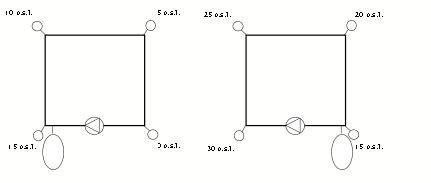The first step in answering this question is to understand the role of the expansion tank and then to understand how a pump generates it’s flow and the relationship between the two.
Once an expansion tank has started to accept fluid it acts as a point of constant pressure in the system. What I mean is as the pressure tries to increase the expansion tank will accept more fluid to maintain overall system pressure. When the system pressure tries to decrease the expansion tank will expel fluid into the system again maintaining overall system pressure.
At its most basic level a pump generates flow by creating a pressure differential, lower pressure before the pump and higher pressure after the pump. At a given flow rate each pump will generate a given pressure differential. When you combine the features of these two elements you can see what happens. If the expansion tank is on the outlet side of the pump (holding the outlet pressure constant) the pump will reduce the pressure on the inlet side of the pump. If the expansion tank is before the pump the pump will increase the pressure on the outlet side of the pump. See the diagram below.

These drawings show what the pressure is throughout the solar loop. By installing the expansion tank on the outlet side of the pump you risk damaging the pump with cavitation. In order to prevent cavitation you want to maintain the inlet pressure on the pump to at least 15 p.s.i.. You can do this by either jacking the system pressure up really high to make sure you have it or you can design the system properly and install the expansion tank prior to the pump.
